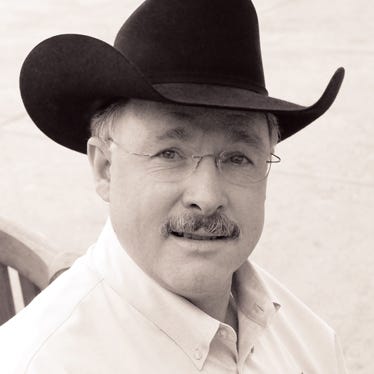Fewer Cows - More Cattle On Feed
Tight supplies are getting tighter. According to the Jan. 1 USDA Cattle Inventory Report, beef cow numbers on Jan. 1 were 2% less than a year earlier at 30.9 million head. What stunned many, though, was the report of 5% fewer beef replacement heifers at
February 22, 2011

Tight supplies are getting tighter. According to the Jan. 1 USDA Cattle Inventory Report, beef cow numbers on Jan. 1 were 2% less than a year earlier at 30.9 million head. What stunned many, though, was the report of 5% fewer beef replacement heifers at 5.2 million head. The Jan. 1 inventory of all cattle and calves in the U.S. is 1% lower than last year at 92.6 million head. USDA notes the 2010 calf crop of 35.7 million head – 1% less than in 2009 – was the smallest calf crop since 1950.
It’s not any more bountiful if you consider the combined inventory of the U.S. and Canada. According to a report, U.S. and Canadian Cattle and Sheep, issued by the National Agricultural Statistics Service last week, there were a combined 35.14 million head of beef cows in both countries as of Jan. 1, which is 2% less than a year earlier. The total combined inventory of cattle and calves (105 million) is also 2% less. One difference is that Canada begins 2011 with 3% more beef replacement heifers (531,600 head) than the previous year.
According to Chris Hurt, Purdue University Extension economist, more abundant feed and a return to profitability are the key incentives necessary for expansion.
“Since the number of heifers being retained is so low, it will be late in 2011 or early 2012 before any movement toward expansion will occur,” he says.
Hurt explains that corn and soybean meal supplies could increase with large 2011 crop production. But, he adds that with the limited number of acres available, trend yields may do little to increase inventories, keeping the 2011-12 marketing year prices high and volatile (see "Corn Stocks Tighten Further").
Regionally, Hurt says increasing concerns about dry conditions throughout the Southeast and Central and Southern Plains will keep producers from expanding until those conditions change. Those three regions account for 55% of the beef cows.
Of the eight states with 1 million head or more beef cows, Kansas grew 3% to 1.48 million head and Montana grew 1% to 1.48 million head. South Dakota held steady at 1.62 million head.
Beef cow inventory in the other top-eight states declined: Kentucky was down 4% to 1.02 million; Missouri 5% to 1.87 million; Nebraska 1% to 1.77 million; Oklahoma 2% to 2.04 million; and Texas down 2% to 5.03 million head.
Of those top-eight states, three begin the year with more beef replacement heifers that last January: Kansas up 3%; Montana up 1%; and Missouri up 5%.
Incidentally, at an estimated 1.6 million head, there were 17% fewer cattle than last year grazing small grain pasture as of Jan. 1.
At the same time, there have been just enough opportunities in the futures markets, despite increasing feedlot breakevens, to coax more cattle to the feedlots. Friday’s monthly Cattle On Feed report says there were 6% more cattle and calves on feed (11.6 million head) on Feb. 1 than a year earlier. Placements of 1.90 million head in January were 4% more than the previous January. January marketings (1.78 million head) were slightly higher than in 2010.
Narrowing supplies are one reason the Economic Research Service (ERS) projects livestock receipts to increase $4.3 billion in 2011, led by rising cash receipts for cattle and calves. Overall, ERS projects 2011 net farm income at $94.7 billion, up $15.7 billion (19.8%) from the 2010 forecast. The 2011 forecast is the second-highest, inflation-adjusted value for net farm income recorded in the past 35 years.
“Weather in 2011 and 2012 will probably be the deciding factor determining when the beef cattle industry will shift from liquidation to expansion,” Hurt says. “Favorable weather that provides above-trend corn, soybean and wheat crops, along with abundant forages, could shift the industry into expansion by 2012.”
However, as cattle prices continue at record-high levels, consumers will ultimately decide how much incentive there is for expansion (see "High Prices Magnify Demand Challenge").
About the Author(s)
You May Also Like





